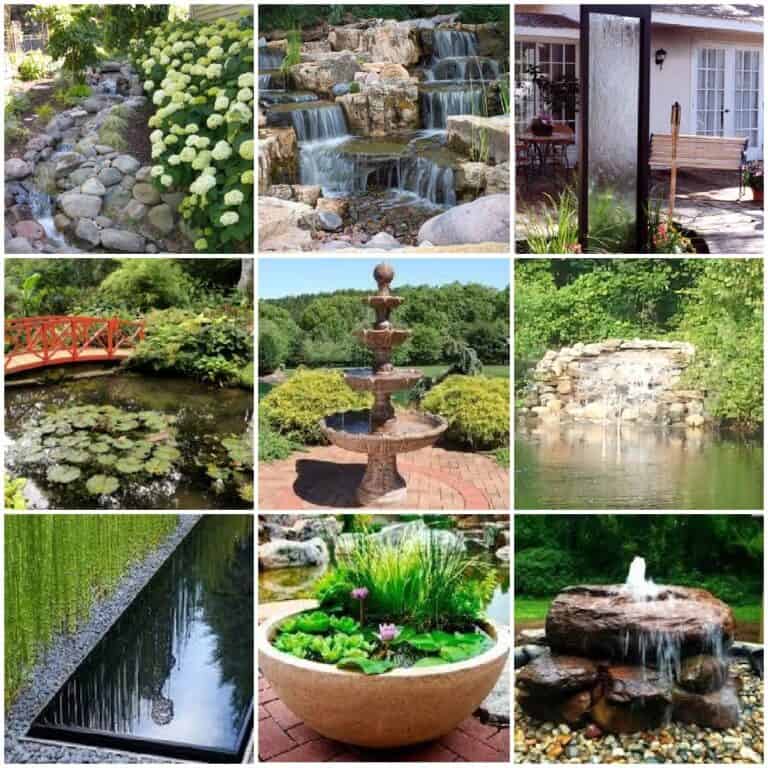
Water Features in the Landscape
Fountains, ponds, pools, waterfalls, and streams can all contribute to a positive personal environment. There are many benefits of water features. The soft sound of falling water masks other unwanted noise, and the sounds of nature release stress from a busy day. Water features also add interest to the landscape by creating movement and attracting wildlife. These features can be very simple or intricate, large or small, and customizable to your needs and budget.
Garden fountains can be designed to produce a dramatic splash effect or to be meditative and calming. Fountains can be wall-mounted or freestanding.
Ponds are a potential addition to any landscape, and can be any size. Small ponds can be made using pre-formed or flexible liners, or any watertight container. There are many kits available with both pre-formed and flexible liner choices. Most kits come with a pump to circulate the water, and a filter to keep the water clear. Large ponds typically have a clay bottom.
Reflective pools can also vary greatly in size, from a small backyard birdbath to the Lincoln Memorial Reflection Pool in Washington D.C. The main purpose of this pool style is to create a scenic reflection. These pools are most often seen in formal gardens in geometric shapes, such as rectangles or circles. Usually only 6-12” deep, the pool’s bottom needs to be a dark color, to allow the water to be reflective.
Streams and waterfalls are a creative addition to sloped areas, and can be used with natural, lined, or pondless systems. Kits are also available for streams and waterfalls that include pumps, liners and catch basins. The pondless system catch basin is usually filled with rocks, and requires lower maintenance than pond systems. Pondless is also ideal for families with young children or pets. A natural setting can be created for streams and waterfalls by planting the edges with native grasses and adding local stone to the edges.
